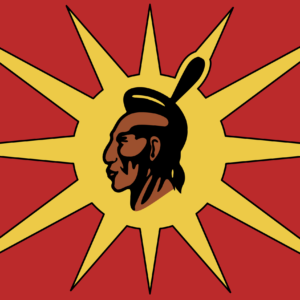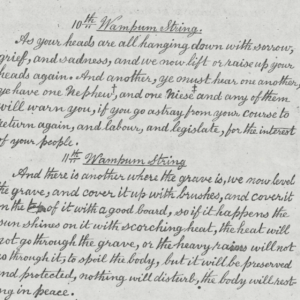
In 2018, a list of the most popular indigenous personalities on Twitter was published by opencanada.org. The list, dubbed ‘Twitterati: the Indigenous Voices edition’, named the top 100 indigenous people contributing to discussions on the social media platform.
Included were notable advocates, academia, politicians, media and organizations that contribute to the discussions surrounding indigenous issues in Canada. In general, these are the people to follow to get involved in the conversations of things that are important to indigenous people.
Facebook is a different beast altogether. There is no “Facebookerati”. It is a longer, slower brewed cup of commentary in contrast to Twitter’s 280 (up from 144 in 2017) character quips.
Facebook has stirred controversy worldwide over it’s corporate lack of responsibility for the drama it has brought to politics. That is playing out here at Six Nations as well.
On the positive side Facebook relationships among indigenous people in Canada was the springboard that took the Idle No More movement from a few mothers with posters to a nationwide resurgence of indigenous activism.
On the downside Facebook unites those who share bigoted ideals about white supremacy and anti-immigration sentiments to allow them to organize and assemble their people as well.
Facebook has proven itself to be the omnibus of misinformation that we’ve all travelled in down the road to polarization — even here on Six.
One only has to be mildly connected to Rez politics to recognize the platform has been the jumping off point for multiple community disputes, fuelled by gossiping keyboard warriors armed with their opinions, the cloak of inbox messages and able to call in support with the click of a tag. Ganging up on people is very easy and often relied upon in Facebook political fights.
In media they call this the ‘echochamber’ — the place where one is preaching to the choir and repeating the same ideas to already same minded people. Collectively, groups can fall deeper and deeper into the rabbit hole of misinformation, what-ifs and what-aboutisms — and before you know it you’ve created a monster of misinformation.
One new discussion that is slinging mud at the Elected Council these days on Six Nations social media is that the SNEC has plans to turn the reserve into a municipality and will soon charge taxes.
To be fair that is an old narrative that seems to be re-emerging, with a little bit of weight coming from Trudeau’s new suspicious looking Indigenous Rights Framework seeking to replace the Indian Act.
I haven’t seen any sources backing up the claim that SNEC is going to “turn us into a municipality” — but is there some clout to this claim? Is Six on it’s way to becoming a municipality? Let’s unpack some facts.
Six Nations is a now a reserve. Technically it is called Six Nations of the Grand River Reserve #40. But before it was a reserve, it was a municipality.
Prior to the Indian Act turning our geographical area into a reserve — way back to the 1700’s — Six Nations Indians occupied land on the Haldimand Tract made up of three low-tier municipalities: Tuscarora Township, Onondaga Township and Oneida Township.
In the 1800s the greater area was amalgamated and became Brant County. According to Six Nations Lands and Resources Lonny Bomberry Six Nations is still identified by it’s Townships —so terminology wise we are technically still made up of low tier municipalities.
However, with the Indian Act came a formal articulation from Canada’s side that we were now “Indians as defined by the Indian Act”, that we would live on reservations, and that while living on those reservations we would have tax free “rights” as Indians. So the municipality lingo of Tuscarora, Oneida and Onondaga was kind of overshadowed by this new articulation that we are a reservation.
Tax free status on reserve is seen from two vantage points. From an indigenous perspective we hold tax free rights because of our sovereignty. Hard stop. But from the perspective of Canada we retain that right because of two things: section 87 of the Indian Act, and additionally band councils are entitled to register for tax free status via paragraph 149 of the Income Tax Act.
While the Indian Act provides tax free status as individual band members — to goods provided on reserve, the income tax act provides tax exemption for “a public body performing a function of government”.
In a letter from the Canada Revenue Agency in 2016, federal officials verify that Indian bands were created by the Indian Act, and from the federal governments perspective are recognized under the Income Tax Act as “a municipality or a municipal or public body performing a function of government”.
When changes to the Income Tax Act came around in 2012, hundreds of band councils across Canada registered for the tax free status as “donees” that the Act now provided them. This did not mean they were registering as municipalities but that the federal government would allow them to receive donations in the same way as charities do — and allow them to distribute tax receipts — keeping the band councils free from income tax.
That 2016 letter, however, clarified that the reason the federal government recognized band councils as public bodies was because “these bands of First Nations may be able to levy property taxes and create by-laws that affect its members. …the very nature of an Indian band and its council under the Indian Act is that of a local government, similar in nature to a municipality.”
So to be clear — it seems the CRA sees reserves as ‘municipal-like’ entities with the ability to create taxes — while band councils across the country seem to agree that they are the administrative governing bodies of sovereign indigenous communities historically rooted to traditional territories.
The fear mongering of late that Six Nations is about to turn into a municipality seems to be rooted in concern that Six Nations residents may be forced to pay taxes to a provincial or federal political system that they may or may not believe in.
According to a number of current sitting Six Nations Elected Councillors that is not factual. The current council says they have no desire to become a municipality, nor want to establish taxes on residents.
Another point of fear mongering is circling around the Cannabis Law, people citing that the required 8% of sales contribution that is required to go back to the community is, in effect, a tax.
Again, officials with SNEC say it is not a tax, but a fee participants in the cannabis industry on Six Nations will pay to the Cannabis Control Commission, with funds likely to be used to assist with policing and other community driven initiatives that are yet to be determined.
There is a natural inclination, unfortunately, to not trust one another in our community because of a shared history of feeling like your voice is not being heard. This was something that was supported by the SNEC’s hasty passing of the Cannabis Law at an impromptu Elected Council meeting and a lack of planning for making that decision making process open to the public.
On this matter, the Elected Council made a big mistake that tarnished the restorative work they did during community consultations on the Cannabis law.
In light of this, it is understandable to doubt the process going forward. However, those mistakes are not evidence that the current sitting elected councillors, who are all Six Nations residents and Haudenosaunee people, are making steps to abandon income tax protections for residents.
It is also not proof that the 12 Haudenosaunee men and women who sit on the elected council are part of a secret evil assimilationist agenda. That belief inherently discredits the power we as individual band members and Haudenosaunee people have over our own destiny.
If you have concerns or comments, or even information to contrast the above — feel free to email it to editor@tworowtimes.com.






